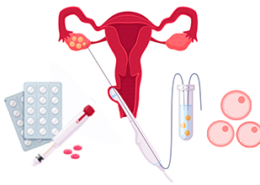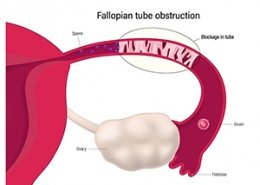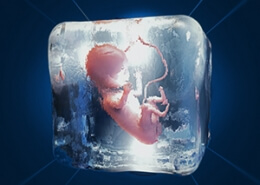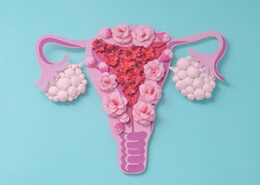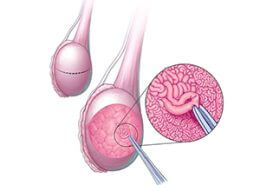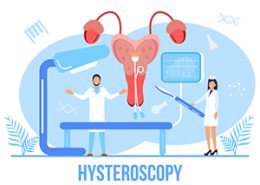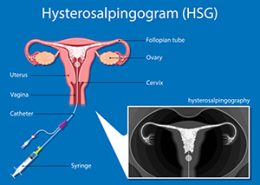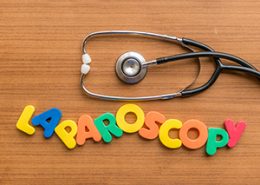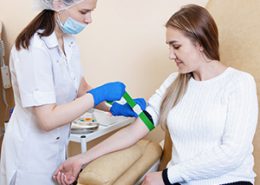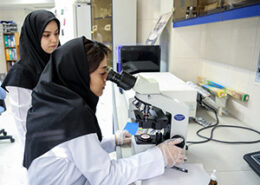Testicular sampling for the male infertility treatment
Male Infertility usually occurs due to impaired production and ejaculation of sperm or low-quality sperm. One of the common causes of male infertility is azoospermia. In men with azoospermia, there is no sperm in the semen that can fertilize an egg. If the level of FSH hormone is normal in men with azoospermia, it is recommended to use testicular sampling methods to definitively detect the presence of sperm in the testicles. PESA, TESA, micro-TESE, etc. methods are among the efficient methods for testicular sampling, which help to extract sperm from the testicular tissue and increase the chances of fertility in a couple. If sperm is found in the testicular tissue sample, it is used to fertilize the egg in assisted reproductive procedures such as IUI, IVF, and ICSI.
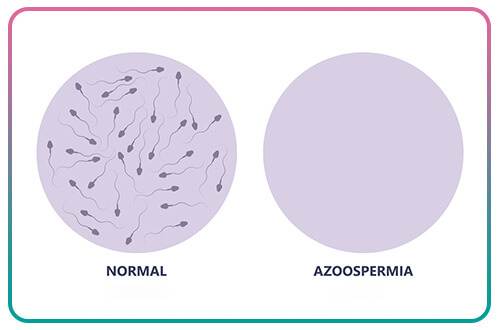
What is a testicular sampling (testicular biopsy)?
Testicles are the male reproductive organs that are responsible for producing sperm and male sex hormones. In the testicles, there are primary sperm cells that turn into mature sperm in 75 days and after 16 stages. In men with azoospermia, no sperm can be seen in the semen for various reasons. Therefore, the expert doctor recommends taking a sample of the testicles to check the process of sperm production in the testicles. Sampling the testicle is a type of surgery to remove a sample or a small piece of the testicular tissue to examine the presence of sperm in the testicles.
The specialist doctor examines the testicular biopsy samples under a microscope to check the presence or absence of sperm and their development rate. If there is a healthy and mature sperm in the sample, the doctor extracts it and uses it to fertilize the egg in assisted reproductive methods such as IUI, IVF, and ICSI.
When is a testicular biopsy used?

The first step in diagnosing male infertility is a spermogram and hormone test. If the spermogram test reports low sperm quality, abnormally low sperm count, or azoospermia, there is a need for further investigations.
Hormonal disorders are often the cause of decreased sperm count and quality, which is shown by blood tests. Sperm problems that occur due to hormonal disorders are usually treated with hormonal drugs. If the level of hormones, especially the FSH hormone, is normal or increased in tests, but the amount of sperm in the semen is zero or abnormally low, it is recommended to perform a testicular biopsy to definitively diagnose the presence of sperm and investigate sperm production problems. In addition to diagnosing the causes of male infertility, testicular biopsy is also used in the following cases:
- Extraction of sperm from testicular tissue in people with azoospermia (for use in assisted reproductive methods)
- Testicular cancer diagnosis
How is the testicular sampling?
One of the essential applications of testicular sampling is extracting sperm from testicular tissue in people with azoospermia. Azoospermia may occur for two reasons: the lack of sperm production in the testicles (non-obstructive azoospermia) or the blockage of the sperm transfer path to the seminal fluid (obstructive azoospermia). Usually, depending on the type of azoospermia, testicular sampling is done in two general ways. These two methods are:
-
Percutaneous biopsy
In the percutaneous biopsy method, a thin needle is inserted through the skin into the testicle or sperm tubes, and a sample of the testicular tissue or fluid inside the tubes is collected. The obtained sample is examined in the laboratory, and healthy sperms are extracted from it. In this method, local anesthesia is usually used for sampling, and it does not require incisions and stitches. PESA and TESA are among the percutaneous biopsy methods.

-
An open biopsy
An open biopsy is a type of surgery that is performed under anesthesia or local anesthesia. In this method, a specialist doctor makes an incision in the skin and testicles. Then he separates a small sample of the testicle tissue and examines it under the microscope. Finally, the incision is closed with stitches. In the past, testicular sampling was done from only one point, but with the difference in the amount of sperm production in different parts of the testicle, today sampling is done from 4 different parts of the testicle. If necessary, samples are taken from the other testicle as well. MESA and Micro-TESE are open biopsy methods.
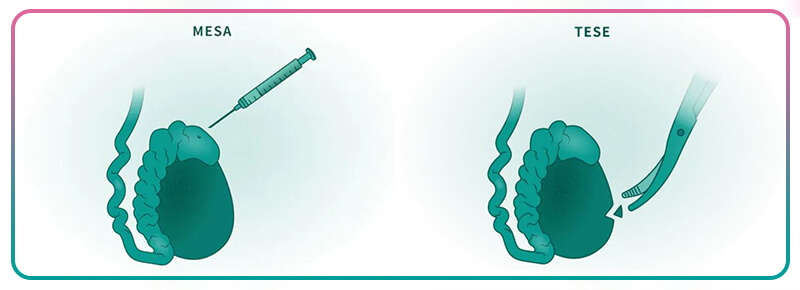
Different types of testicular sampling methods
-
PESA
The PESA method is called subcutaneous extraction of sperm from the seminal tubes. In this method, the contents of the epididymis tubes (seminal tubes) are removed with a special needle dipped in a culture medium. The sample obtained in the laboratory is examined for the presence of sperm; if it is present, sperm are extracted and collected. This method is used in cases where a person has obstructive azoospermia and despite the production of sperm in the testicle, a defect or congenital blockage or damage caused by surgery (such as vasectomy) and infection causes obstruction in the way of sperm exit.
-
MESA
If azoospermia is caused by a blockage in the epididymis, a method called MESA can also be used for sampling. In this method, the surgeon opens the scrotum and determines the epididymis obstruction with a microscope. Once the location of the obstruction is identified, the surgeon uses a special syringe to remove the sperm sample from behind the obstruction and check and confirm the presence of sperm under the microscope. In the MESA method, more sperm are recovered compared to the PESA method.
-
TESA
Sometimes, in patients with azoospermia, it is not possible to extract sperm from the seminiferous tubules. Therefore, the sperm sample should be taken directly from the testicle tissue. One of the ways to take a sample from testicular tissue is the TESA method. In this method, through the skin and without the need for cutting, using special needles, the sperm sample is drawn directly from the testicle. The sample is examined under a microscope to ensure the presence of healthy sperm.
-
Micro-TESE
Micro-TESE is one of the most widely used testicular sampling methods. In this method, the surgeon makes a small incision in the testicle and takes samples of testicular tissue that are more likely to contain sperm. The samples are examined under a microscope, and healthy sperm are isolated. In this method, the possibility of finding sperm is greater than in other methods. Micro-TESA surgery is recommended for people with obstructive azoospermia and people whose sperm are lost while passing through the seminiferous tubules.
Post-testicular biopsy care
After the testicular biopsy, the specialist doctor offers recommendations for the patient’s recovery and comfort. These cares include:
- Avoid sex for one to two weeks
- Do not wash the operation site for 48 hours, and keep the operation site clean.
- Avoid taking aspirin for a week.
- Take prescribed painkillers and antibiotics as prescribed by your doctor.
- Avoid vigorous physical activity for a week.
- Wear tight underwear for a week.
- It is normal to have swelling, pain, and even some bleeding for a few days. If these side effects last, be sure to inform your doctor.
Conducting IVF after testicular sampling
After sampling from the testicles, the extracted sperm are checked for quality. If the sperms are of good quality, they can be used for egg fertilization by one of the assisted reproductive methods, such as IVF and ICSI. After separating from the testicular tissue sample, healthy sperm are ready to be injected into the egg to form an embryo. Learn more about boosting sperm quality: What’s the best way to produce healthy sperm?
If assisted reproductive methods are not performed after testicular sampling, the extracted sperm can be frozen and stored. If sperm are not found after a testicular biopsy or the sperm are of poor quality, donor sperm can be used for pregnancy.
Micro-TESE Surgery in Iran
Microsurgical Testicular Sperm Extraction (Micro-TESE) is one of the most advanced surgical techniques used to retrieve sperm from the testicles in men with azoospermia (absence of sperm in the semen). In this method, a surgeon or male fertility specialist uses a high-powered operating microscope to carefully examine testicular tissue and identify areas where sperm may be present for extraction. This technique is especially helpful in cases where sperm production is severely limited and plays a vital role in enabling pregnancy through assisted reproductive technologies like ICSI.
In Iran, Micro-TESE is performed in many reputable fertility centers and hospitals and is recognized as one of the most effective treatments for male infertility. Specialized institutions such as the Avicenna Fertility Center and the MOM Fertility Center in Tehran offer this procedure with dedicated expertise.
Cost of Micro-TESE Surgery in Iran
The cost of Micro-TESE varies depending on the treatment center, the complexity of the patient’s condition, the equipment used, and the surgeon’s level of experience. On average, the procedure in Tehran ranges from $1,000 to $2,500, making it a cost-effective option compared to many other countries, without compromising on the quality of medical care.
If you need guidance for Micro-TESE surgery in Iran, you can contact us for consultation and start the treatment process, and ask your questions. We are by your side to complete this path.

